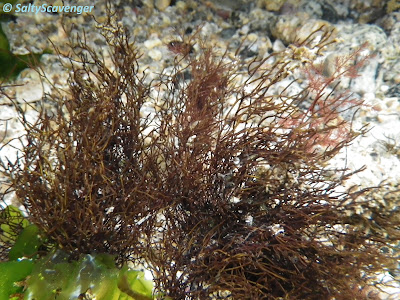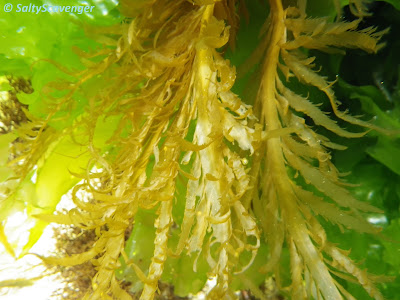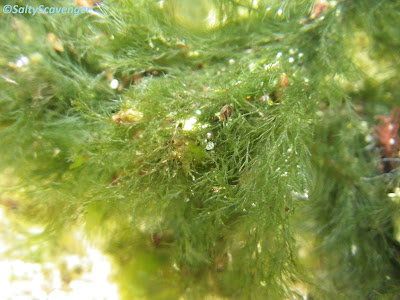The intertidal sediments experience periods of erosion and deposition which in turn influence the organisms found on the shore.
Strong winds and waves resulted in the erosion of the finer sediments to reveal a pebble bed below, but what was astonishing was that barnacles and polychaete worm tubes were among the cobbles, even though the substrate had not long been exposed.....
 |
| Erosion of the finer sediments, have left coarser sediments exposed. Habitat classification: LS.Sa (Littoral sand) EUNIS A2.2 and LS.LCS (Littoral coarse sediments) A2.1 |
 |
| Polychaete worm tubes occur amongst the coarser sediments of the lower shore. |
 |
| Polychaete worm tubes occur amongst the coarser sediments of the lower shore. |
 |
| The occurrence of the polychaete worm tubes is quite extensive. |
 |
| There are even barnacles on the cobbles! |
This is quite intriguing as the shore is so variable and the coarser sediments are often covered as shown below.
 |
The shore in December, 2014.
|
 |
| The shore in Summer, 2014 |
 |
| The shore in September, 2012 |











































































